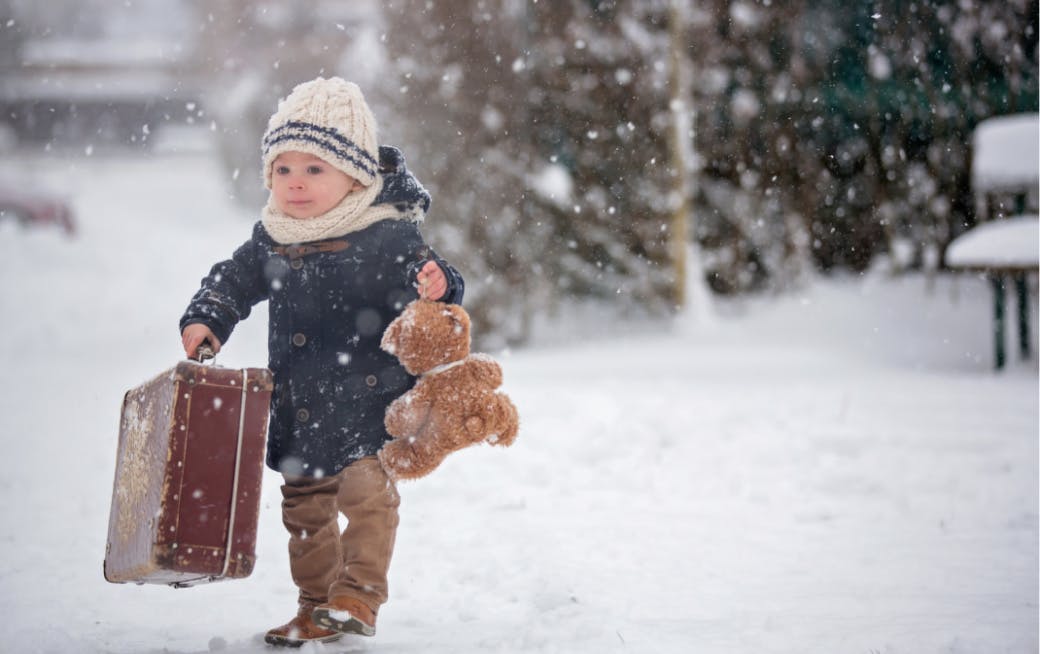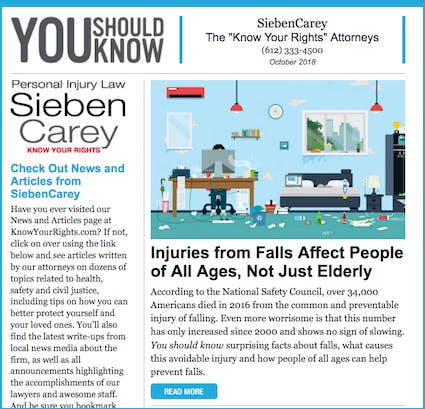Common Winter Injuries and How to Avoid Them
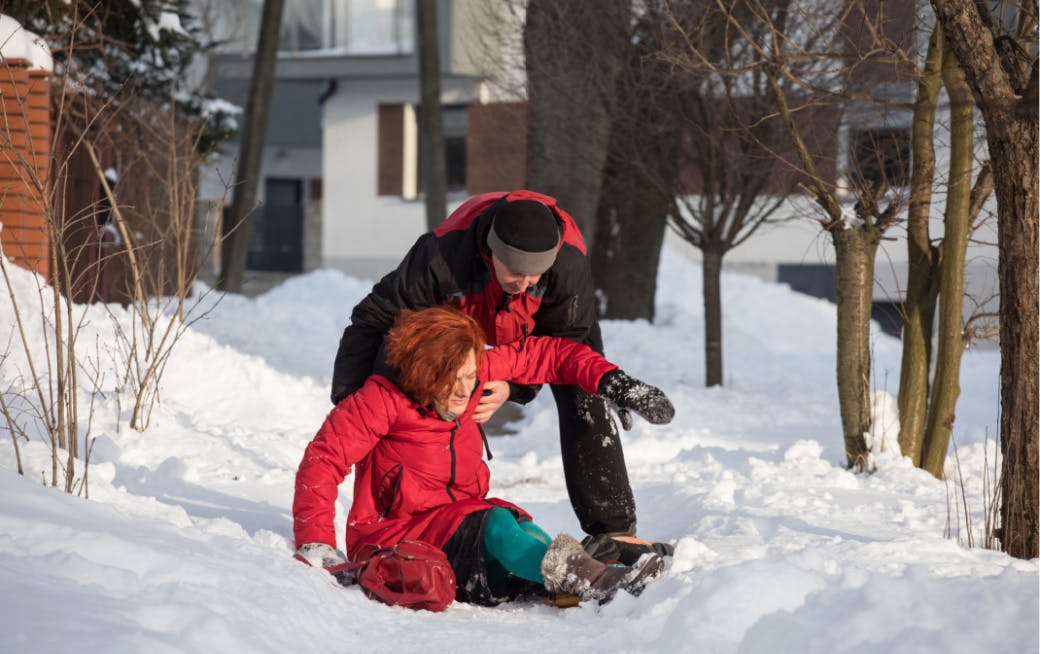
Cold, snow, and ice are just part of life during winter in Minnesota. And while the crisp air and striking scenery have their benefits — not to mention all the fun winter sports — it can add risks for injury and illness.
Some of the most frequent causes of injury or health concerns in winter include:
- Slipping on ice and snow
- Muscle strain from shoveling snow or scraping ice
- Overexposure to the cold
- Carbon monoxide poisoning
- Winter sports mishaps
Not all winter accidents will cause severe injury, but many can be quite serious. Fortunately, preventing winter injuries is possible, and you can enjoy the season without unnecessary complications.
Here are the most common winter injuries — and how to avoid them.
1. Slips and Falls
Winter in Minnesota means snow, and snow usually means shoveling sidewalks and driveways. That task can mean more than just being cold, too. If you don’t use the proper form and technique, it can lead to injury. The repetitive twisting and lifting used by most snow shovelers can strain the body. All it takes is one wrong move to pull a muscle in your back, shoulders, or neck.
In some cases, injuries caused by shoveling snow can even cause permanent damage.
Here’s how to lower the chances of getting hurt when you’re clearing your lane this winter:
- Get the right size shovel. Bigger shovels might cover more surface area, but they can get much heavier once you load them up with snow, requiring more effort and a greater chance of muscle strain.
- Before you get to work, take a little time to warm up. Stretch and move around a bit to get your blood flowing and your body ready for the exertion.
- When grasping the shovel, keep your hands at least 12 inches apart on the handle to increase your leverage.
- You may have heard the advice, “lift with your legs, not your back.” That’s as true when shoveling snow as it is when moving furniture. Never put undue strain on your back. Instead, bend at the knees and lift the snow using your leg muscles.
- If possible, don’t lift the snow at all. Push it away to clear the area.
2. Back, Neck, and Shoulder Injuries
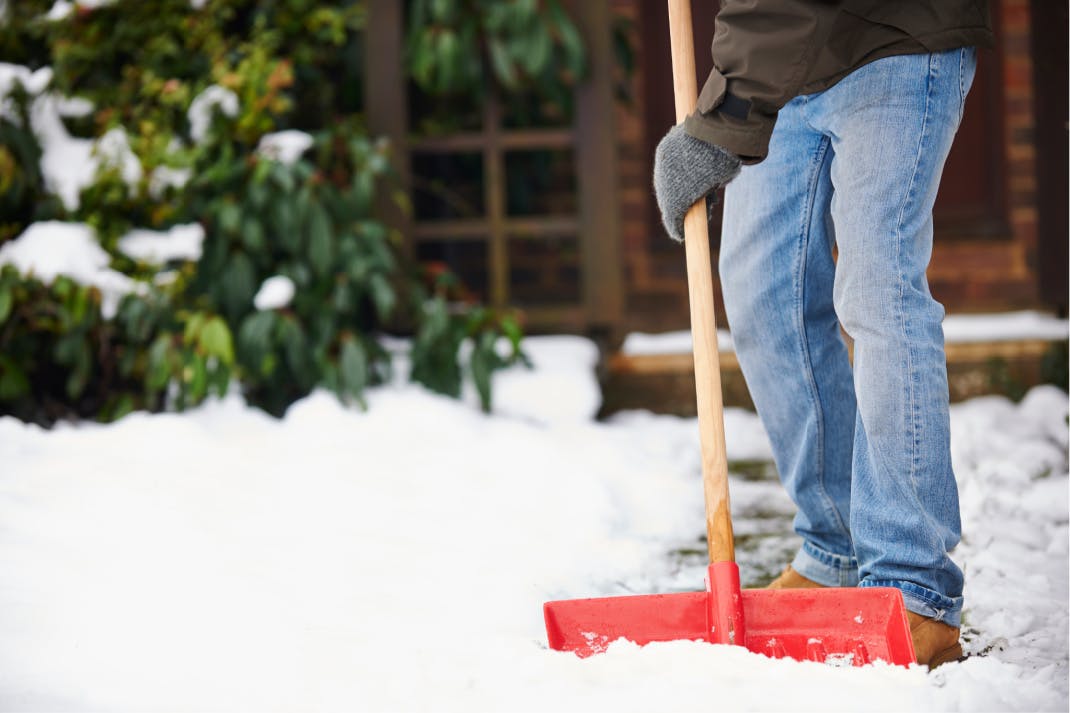
Winter in Minnesota means snow, and snow usually means shoveling sidewalks and driveways. That task can mean more than just being cold, too. If you don’t use the proper form and technique, it can lead to injury. The repetitive twisting and lifting used by most snow shovelers can strain the body. All it takes is one wrong move to pull a muscle in your back, shoulders, or neck.
In some cases, injuries caused by shoveling snow can even cause permanent damage.
Here’s how to lower the chances of getting hurt when you’re clearing your lane this winter:
Get the right size shovel. Bigger shovels might cover more surface area, but they can get much heavier once you load them up with snow, requiring more effort and a greater chance of muscle strain.
Before you get to work, take a little time to warm up. Stretch and move around a bit to get your blood flowing and your body ready for the exertion.
When grasping the shovel, keep your hands at least 12 inches apart on the handle to increase your leverage.
You may have heard the advice, “lift with your legs, not your back.” That’s as true when shoveling snow as it is when moving furniture. Never put undue strain on your back. Instead, bend at the knees and lift the snow using your leg muscles.
If possible, don’t lift the snow at all. Push it away to clear the area.
3. Heart Attacks
In order to keep the body warm and adjust to drops in temperature, blood pressure and cholesterol levels rise during cold winter months. The heart also has to work harder to regulate blood flow in the cold, and the weather increases the chances of a blood clot.
All of these factors combine to make winter a time of unusually high risk for heart attacks and strokes.
If you’re at risk for heart disease, avoid too much strenuous activity in the winter. Take frequent breaks from shoveling or other outdoor work, and head straight inside if you start to overheat.
And if you do experience any symptoms of a heart attack, such as chest pain or shortness of breath, seek medical attention right away.
When outside in the cold, make sure to take breaks from the weather to warm up and give the heart a break. If there are any signs of a heart attack, such as a sudden tightening of the chest, chest pain, or shortness of breath, seek medical attention immediately.
4. Frostbite
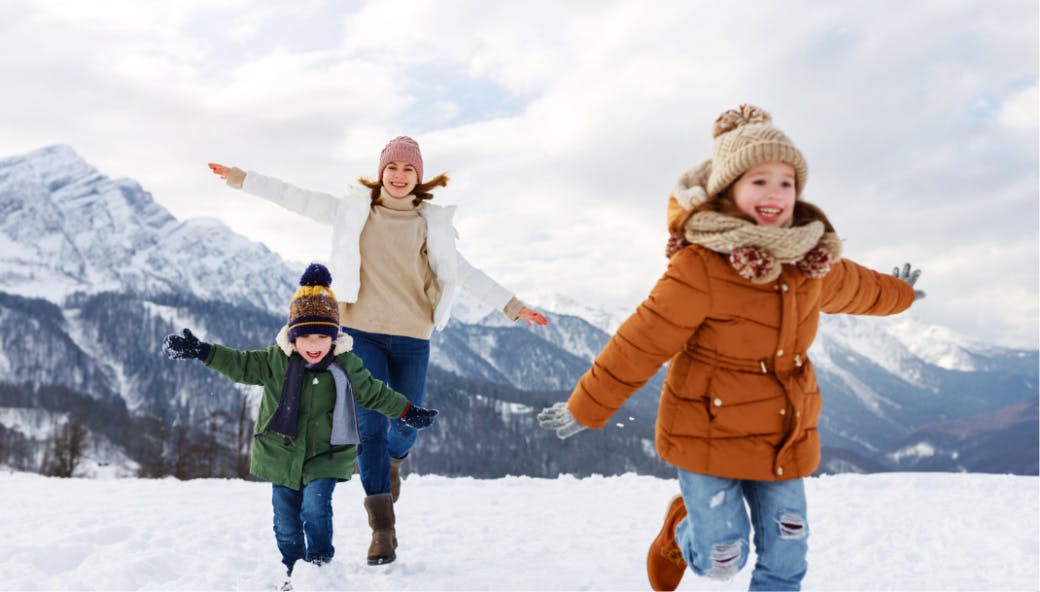
You don’t have to walk on ice or shovel snow to be at risk for injury in the winter months. The cold itself can be a threat.
Frostbite is an injury caused by the freezing of your skin and underlying tissue. Your extremities, such as your hands, feet, ears, cheeks, chin, and nose, are especially vulnerable.
The first signs of frostbite are numbness, clumsiness, and a tint to the skin — usually red, white, bluish, or yellow. If allowed to take hold, frostbite can cause permanent damage to the affected body parts.
In order to avoid frostbite, don’t spend too long outside in frigid weather. When you are outside, be sure to layer up with warm clothes, including gloves, thick socks, and winter hats — and make everything as wind- and waterproof as possible. Keep active, and don’t let your body cool down too much.
If you believe you may be experiencing frostbite, seek emergency care immediately.
5. Hypothermia
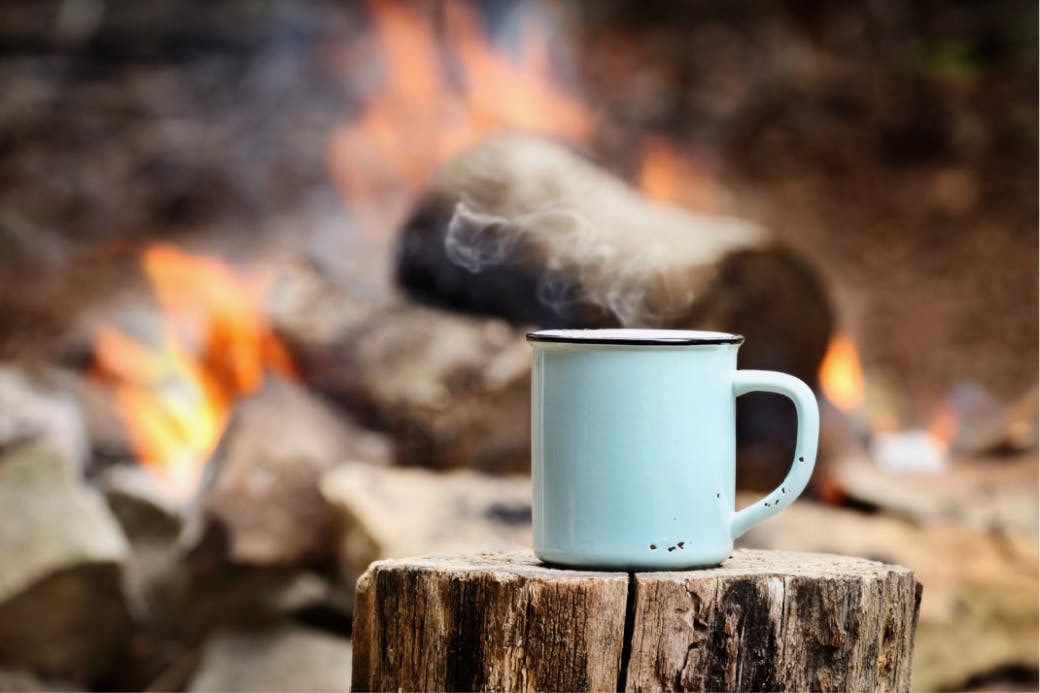
The human body tries to maintain a temperature of about 98.6 degrees. But when exposed to the cold for too long, the body will struggle to regulate temperature and may ultimately become overwhelmed.
Hypothermia happens when a person’s body temperature drops below 95 degrees. The early symptoms of hypothermia are:
- Excessive shivering
- Rapid breathing
- Confusion
- Loss of dexterity
- Racing pulse
The body tries to warm itself through shivering. However, as hypothermia progresses, the shivering will reduce. At that stage, the person experiencing hypothermia may become more confused, and ultimately, the heart may stop working normally.
Preventing hypothermia is similar to preventing frostbite.
- Wear warm protective layers and keep as much of your skin covered as possible.
- Drink plenty of warm fluids such as tea, coffee, or broth.
- Take breaks from the cold by going inside to warm up.
- If symptoms of hypothermia begin to show, get inside, remove any wet clothing, and get warm right away.
6. Carbon Monoxide Poisoning
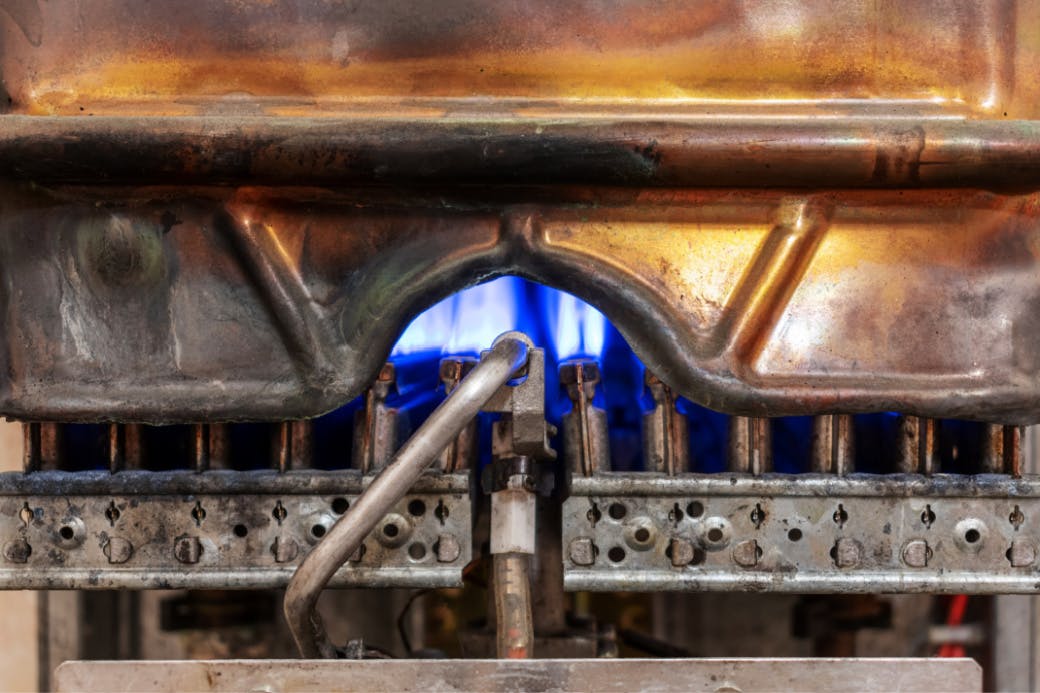
Carbon monoxide is an odorless, invisible gas found in exhaust fumes of certain fuels such as gas, wood, and coal. Inhaling the fumes leads to carbon monoxide poisoning, which can cause heart and brain problems. Early symptoms of carbon monoxide poisoning include:
- Headaches
- Nausea
- Dizziness
- Fatigue
The risk for carbon monoxide poisoning skyrockets in the winter due to the increased use of furnaces, fireplaces, and heaters.
To prevent carbon monoxide poisoning, every year you should:
- Inspect your heating system
- Clean your fireplace’s flue and chimney
- Make sure any fuel-burning devices, like gasoline generators or heaters, are ventilated properly
- Test your carbon monoxide alarm — or install one (or more) if you haven’t already
Never warm your car up inside a closed garage, either. Car exhaust fumes contain carbon monoxide, and trapping them inside your garage could be dangerous.
If you think someone may be experiencing carbon monoxide poisoning, take them outside immediately and call 911.
Enjoy your Minnesota winter injury-free.
Whether you love winter, hate it, or just tolerate it, don’t forget to stay safe and healthy. The coldest months of the year do bring with them a range of potential risks, but that doesn’t mean you can’t enjoy the season. With these tips on hand, you’ll be well on your way to greater safety and peace of mind.
However, if you’ve been injured as a result of one of these dangers — or any other — you may be entitled to compensation. Let us know the details of your situation.




